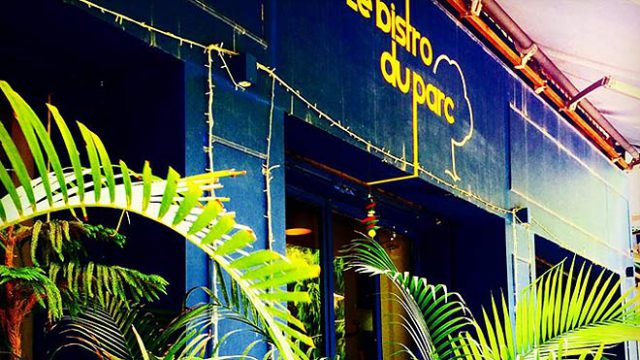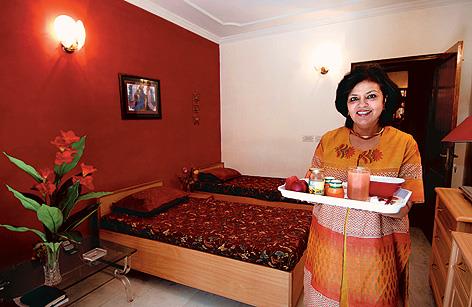Lack of knowledge is a serious handicap. But a misguided notion is a bug. And more often
But Zambar, since its inception about three years ago, has tried to set the record straight. With its rather simple approach of keeping things limited yet touching upon the various facets of Southie cuisine, it has been able to give Delhizens what they hadn’t tasted before. Peeling off the vegetarian-only notion first, it had successfully reminded us that seafood, the parottas and meat fries and the Nizam’s legacy of spiced-up curries are very much a part of the platter.
So, when told about Chef Arun Kumar coming up with a Travancore royalty-inspired menu that promised more than 24 different flavours and tastes, I was rather eager to check out how different it would be from the existing one. A tiny welcome shot of coconut water set the tone on arrival at their Defence Colony restaurant.
The tasting session had begun even before the diners knew it. The green, deep yellow-ish and flour-coloured sticks weren’t a part of the table décor — they were three different varieties of parotta sticks to start with! The four different types of chutneys — usually meant to be had with idlis and vada — went very well with the sticks. In fact, so good were the multi-coloured — and flavoured — chutneys, the chef rightly pointed it out that idlis and vadas were ‘mere tools’ for sampling these viscous edibles.
Next up were the bite-sized appetisers — both veg and otherwise. The prawn, with a hint of gunpowder, was the winner for me, but I was a tad disappointed with the mutton fry. Not that it didn’t taste the way it should — it was wonderful — but beef fry is what Kerala eats, and there can be no substitute for that.
Until this point, it was a walk in the park, for what started next can only be described as a barrage of food in ‘thokku service’ (waiters quickly slapping the food down on your plate from their four-chamber serving bowls).
I didn’t want to waste my appetite on a whitish Malabar stew — but I changed my mind, and a very good decision it was, too. The thick stew, of chunky vegetables in coconut milk, was very lightly spiced (but not at all bland) and with a subtle hint of ginger. Perfect! Fresh appams being made at the live kitchen, the aroma of fresh ground spices in the vegetable thorun (a mixed veg dish), the chicken, mutton and fish varieties – everything compelled me to tuck in rather greedily. I was witnessing regional boundaries melt on my thali as both the Malabar parotta and appams got along famously with the Andhra chicken and Kerala mutton. The only thing missing was a crab item.
By the time the three different kinds of biriyanis – veg, fish and mutton — arrived, my mind was journeying somewhere on NH9 or NH17. The remarkable part was, all this greedy eating wasn’t making me feel giddy — “home-cooked” is a widely misused term, but I’m sure everyday food at any household in Kerala or coastal Andhra would be almost similar.
There’s a typical saying, “Let’s have something light, let’s have south Indian.” At least I felt heavier by a kilo now. But there’s also another saying, “There’s always room for dessert!” And here’s a word of caution: do not leave Zambar without having their coconut jaggery pudding. Period.
Thankfully, due to my travels, I always knew what culinary treasures are spread across the bottom half of India. But, then, it’s not every day that one travels to Kochi, Chennai or Hyderabad. So there’s no option but to be back at Zambar.
Where: Zambar on the Moon, Defence Colony
Cost: Rs 1,800 (approx for two persons)
Delhi
eating out
restaurants




